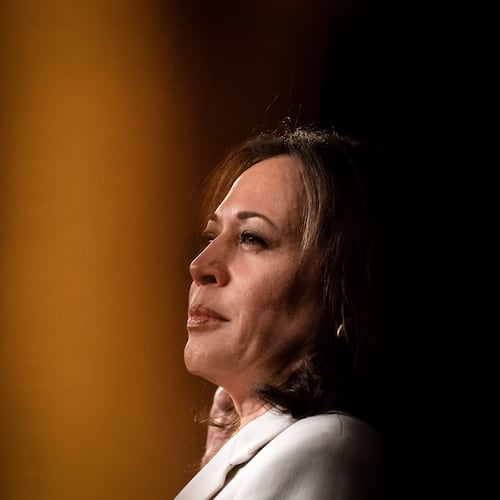Long after nightfall on Saturday, the Georgia Capitol was the scene of a tense, but somehow familiar, standoff.
About 100 protesters gathered outside the Gold Dome and chanted “tear down Gordon” as a group of officers ringed the focus of their anger: A bronze statue of John Brown Gordon in full Confederate regalia, pointed northward, atop his horse Marye.
Unveiled in 1907, the statue of the former Georgia governor and U.S. senator is one of the most controversial monuments to the Old South on the Capitol grounds, and is frequently at the center of protests and calls for removal.
Aside from being a Confederate war commander, Gordon is generally acknowledged as being a leader of the Ku Klux Klan in Georgia.
And even when state officials in 2013 relocated a statue of another white supremacist leader from Georgia's past – a fist-pumping mold of Tom Watson – Gordon and other Confederate icons were left intact.
>> FROM 2018: Photos: Confederate memorials in metro Atlanta
Back then, state officials had more leeway to move controversial statues. But under a law signed by Gov. Brian Kemp last year, Confederate markers can only be moved to a "site of similar prominence" – which means retiring them to museums or out-of-the-way parks is likely out of the question.
The measure was approved in a mostly party-line vote at the urging of Georgia Republicans who said it would protect war monuments and memorials around the state from damage by imposing stiffer penalties on vandals. Kemp made no mention of the Civil War when he signed the bill.
“It is true that there are monuments in our history that do not reflect our values," he said then. “We cannot erase them from our history. We must learn from them. These monuments and markers remind us of how far we've come not only as a state but as a country.”
'True depiction'
The protests for racial equality and civil justice sparked by police killings, however, have brought new attention to the monuments. Activists in DeKalb County are pressing officials to defy Georgia law and dispose of a Lost Cause monument in the heart of Decatur Square.
And the group rallying at the Capitol each day has vowed to continue to demonstrate until the Gordon statue is removed. One flyer advertising the daily rallies included the hashtag "#TEARDOWNGORDON."
“It’s time to remove that statue,” said Annette Jones, who joined a march from Big Bethel AME Church to the Georgia statehouse on Sunday to demand an end to systemic racism. “Why does Georgia have a statue that represents white supremacy on the front lawn of the Capitol?”
The Brown statue is one of the most prominent in a collection of statues, plaques, portraits and marble busts of Confederate military leaders and politicians scattered across the statehouse complex.
In 2017, they were joined by a towering statue of Martin Luther King Jr., who stands off the street named in his honor. State Rep. Calvin Smyre, who often serves as an important bridge between Republican leaders and African-American powerbrokers, helped marshal that process.
“The King statue was a step in the right direction, but we need to continue it,” said Smyre, D-Columbus. “I’m not against removing the statue, but if we don’t, these statues ought to have a true depiction of the role they played in history.”
'Restore the truth'
That could include references to Gordon’s defense of slavery as “morally, socially and politically right” and his praise of the Klan as “a brotherhood of … peaceable, law-abiding citizens.”
Some lawmakers want Georgia to rethink other mainstays in the Capitol. State Rep. David Dreyer, D-Atlanta, said an oil painting of Robert E. Lee should also be removed from the Capitol. Virginia leaders recently announced plans to remove an iconic statue of the Rebel general from downtown Richmond.
“They are symbols of white supremacy designed to send a message to African-Americans and other oppressed people about who is in charge,” said Dreyer. “We need to send the message that the Georgia government is for everyone no matter what they look like or where they’re from.”
The effort to remove Gordon’s visage from the Capitol has an ally in one of his descendants. Mimi Kirk, a Washington-based project manager, is a great-great-great granddaughter of Gordon. She said she considers wiping his image from the Capitol “less an erasure and more a correction.”
“Removing this heroic image of the general can help restore the truth behind the cause he defended – a truth that has been glossed over for far too long, thanks to the work done by symbols and monuments just like this,” she said.
The Latest
Featured







